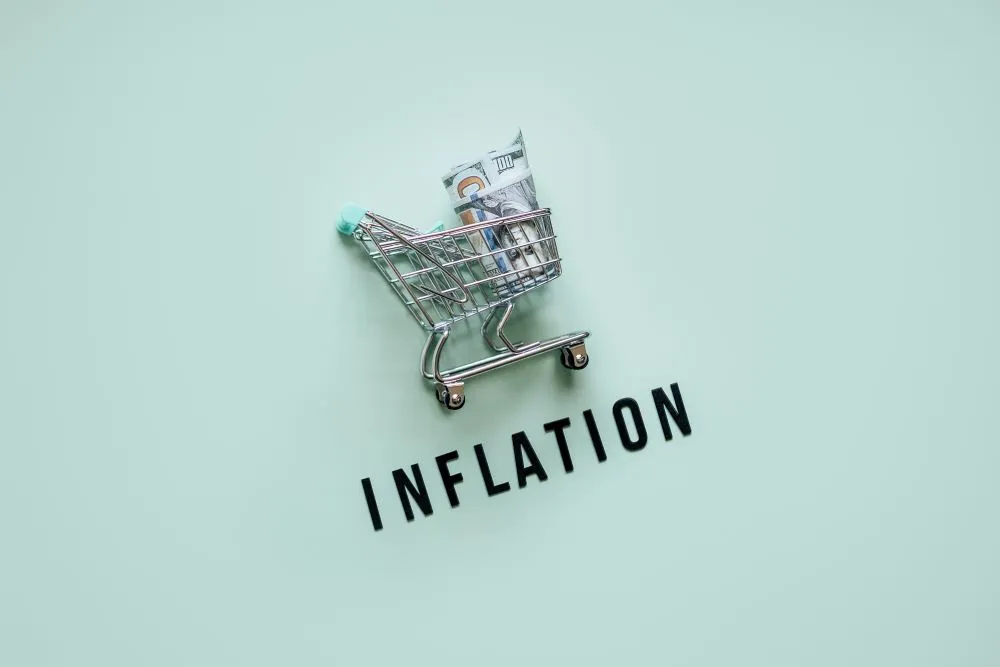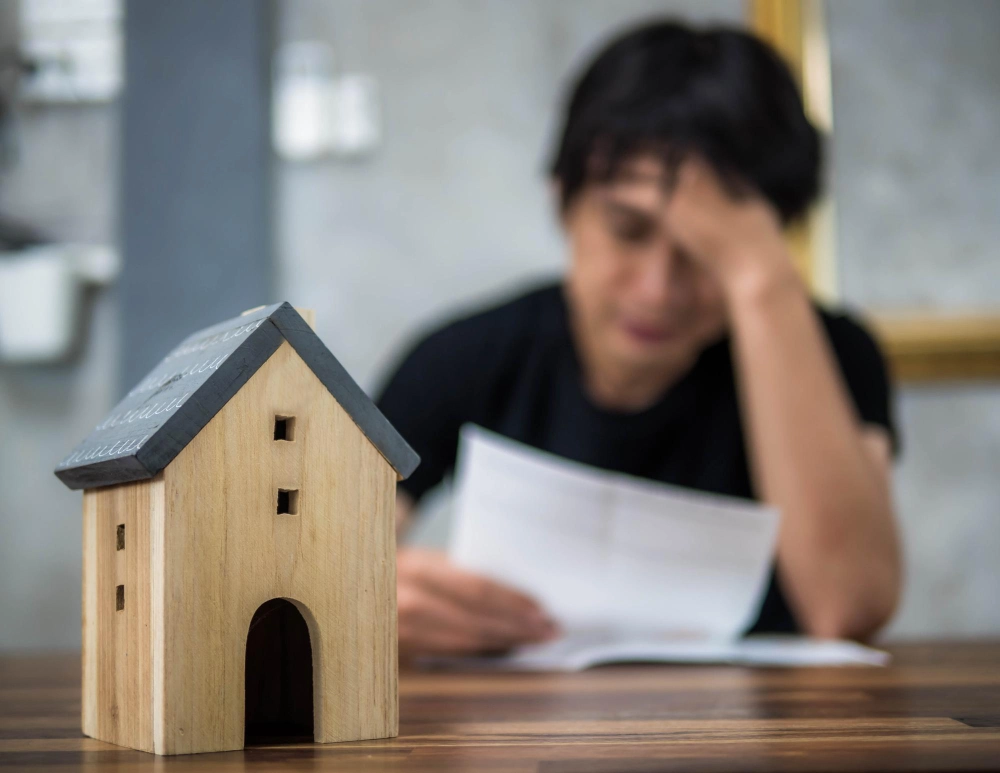Inflation is an important and frequently discussed economic phenomenon, especially because of its broad influence on the economy and daily life. According to experts, inflation is a comprehensive and continuous increase in prices caused by various factors. In other words, inflation is the process of continuously decreasing the value of a currency. Read more in this article regarding the causes, types, impacts and ways to overcome inflation.
1. Understanding Inflation
In general, inflation is a general and continuous increase in the prices of goods and services over a certain period of time. However, a deeper understanding of inflation can be gained from various perspectives:
1.1 According to Experts
According to Paul A. Samuelson, a famous economist from the United States, inflation is a situation where there is a general and continuous increase in prices. Meanwhile, according to Milton Friedman, a Nobel-winning economist, inflation is a monetary phenomenon that always and everywhere occurs when there is an increase in the money supply that is faster than the growth in output of goods and services.
According to AP Lahner, inflation is a situation where there is an excess of demand for goods in the economy as a whole, and according to Dwi Eko Waluyo, inflation is a form of economic disease that often occurs and is experienced by almost all countries, which is a tendency to increase prices in generally and occurs continuously.
As previously mentioned, Paul A. Samuelson emphasized inflation on increasing prices, while Milton Friedman linked inflation to the growth of the money supply that exceeded the output of goods and services. Another economist, AP Lahner, sees inflation as excess demand for goods in the economy, and Dwi Eko Waluyo calls it an economic disease common to many countries. In conclusion, inflation can be interpreted as a complex economic phenomenon with various causes and impacts. Understanding the definition and causes of inflation is important for formulating appropriate policies to control and prevent inflation.
1.2 According to KBBI and IMF
According to the Big Indonesian Dictionary (KBBI), inflation is a decline in the value of money (paper) because a lot of money circulates quickly and causes the price of goods to rise. Meanwhile, according to the International Monetary Fund (IMF), inflation is the rate of increase in prices of goods and services measured in percentages, usually expressed annually.
2. Causes of Inflation
Inflation can be caused by various factors. The causes of inflation are:
2.1 Main Causes
2.1.1 Money Circulation
Excessive circulation of money in an economy is one of the main causes of inflation. When the amount of money in circulation is greater than the amount of goods and services available, the value of money will decrease and the prices of goods and services will increase.
2.1.2 Increased Production Costs (Cost Push Inflation)
Cost push inflation occurs when the costs of producing goods and services increase, which ultimately forces producers to increase selling prices. The following are several factors that influence production costs:
1. Increase in raw material prices: Increased prices of raw materials such as oil, metals and other raw materials will increase production costs.
2. Increase in wages: An increase in workers' wages without being balanced by an increase in productivity will increase the burden of production costs.
3. Weakening of the currency exchange rate: If a country's currency weakens, the cost of importing goods and raw materials will increase, which in turn increases the cost of production.
2.1.3 Number of Demand Increases (Demand Pull Inflation)
Demand pull inflation occurs when demand for goods and services exceeds production capacity. Several factors that influence the increase in demand include:
1. Increase in people's income: When people's income increases, their purchasing power also increases, which ultimately drives demand for goods and services.
2. Government policies: Policies such as reducing taxes and increasing government spending can increase aggregate demand in the economy.
2.2 Supporting Causes
2.2.1 Geopolitical Conflict
Geopolitical conflicts can cause economic instability and disruptions in the supply of goods and services, which can ultimately trigger inflation. For example, war or political tensions in oil-producing regions can cause global oil prices to rise.
2.2.2 Climate Change
Climate change can disrupt the agricultural sector, causing crop failures and decreased food production. This can lead to food shortages and rising food prices, contributing to inflation.
2.2.3 Speculation
Speculation in asset markets such as property and shares can cause unstable price increases and fluctuations. When investors speculate on a large scale, asset prices can soar, which ultimately affects the prices of other goods and services.
3. Types of Inflation
Inflation can be classified based on various criteria, including its source, impact, causes, and nature.
3.1 Based on the Source
3.1.1 Inflation from Abroad
Inflation originating from abroad occurs when a country experiences an increase in the prices of imported goods and services. For example, an increase in world oil prices can cause inflation in oil importing countries.
3.1.2 Domestic Inflation
Domestic inflation is caused by domestic factors, such as increased domestic demand, increased production costs, or expansionary monetary and fiscal policies.
3.2 Based on Impact
Inflation can be classified based on its impact on the economy. Each type of inflation has different consequences for people's purchasing power, economic stability, and overall economic growth.
3.2.1 Mild Inflation
Mild inflation is when price increases are below 10% per year. This type of mild inflation is still considered normal and can even encourage economic growth. At this level, inflation often reflects a healthy increase in demand for goods and services in the economy. In other words, mild inflation can be an indicator of strong economic activity and rising incomes.
3.2.2 Moderate Inflation
Moderate inflation is when price increases are between 10% and 30% per year. This type of inflation begins to disrupt the economy and reduces people's purchasing power. As the prices of goods and services increase rapidly, consumers and businesses begin to feel the pressure. People's purchasing power decreases because income cannot keep up with rising prices.
3.2.3 Heavy Inflation
Heavy inflation is when prices increase between 30% and 100% per year. This type of inflation is very damaging to the economy and causes economic instability. At this rate, the prices of goods and services increase drastically, making it difficult for consumers to meet their basic needs. Heavy inflation can lead to currency devaluation, market chaos, and increased poverty, as well as political and social instability.
3.2.4 Very Heavy Inflation
Very heavy inflation or hyperinflation occurs when prices increase more than 100% per year. This type of inflation can destroy a country's economy and cause a severe economic crisis. Hyperinflation causes prices to rise so quickly that cash loses value almost instantly. Consumers may have to carry stacks of cash just to buy everyday items, and life savings can evaporate in a matter of days.
3.3 Based on Cause
3.3.1 Cost Push Inflation
Cost push inflation occurs when production costs increase, which forces producers to increase the selling prices of goods and services.
3.3.2 Demand Pull Inflation
Demand pull inflation occurs when demand for goods and services exceeds production capacity, which causes prices to rise.
3.3.3 Bottle Neck Inflation
Bottle neck inflation occurs when there are obstacles in the supply chain, such as raw material shortages or distribution disruptions, which cause price increases.
3.3.4 Anticipated Inflation
Anticipated inflation is inflation that has been previously predicted by economic actors. Typically, economic agents will adjust their prices and wages based on these inflation estimates.
3.4 Based on its nature
3.4.1 Creeping Inflation
Inflation occurs when there is a gradual increase in prices, usually below 3% per year. While this number may seem small, its impact can be very significant on the economy. This type of inflation, even though it is stable, can still put pressure on people's purchasing power gradually over time.
3.4.2 Open Inflation
This inflation occurs when the price of goods and services increases openly without any intervention or effective price control by the government. This situation is often caused by external factors such as increasing global demand or rising raw material prices.
3.4.3 Suppressed Inflation
A situation where the government takes steps to control rising prices of goods and services by setting price limits or controlling the distribution of goods. Even though on the surface it appears stable, closed inflation can cause its own problems. Excessive price controls can lead to an imbalance between supply and demand, which in turn can create black markets and increased illegal activity.
3.4.4 Hidden Inflation (Hidden Inflation)
A phenomenon in which prices remain stable in nominal terms, but the real value of money decreases because the quality of goods and services decreases. This can happen through various means, such as reducing the size or quality of the product without changing the price charged. Consumers may not immediately notice this inflation because prices remain the same, but in the long term, the impact can be detrimental because actual purchasing power decreases.
4. Measuring the Inflation Rate
The inflation rate is measured using the consumer price index (CPI). The CPI measures changes in the prices of goods and services consumed by households. Based on the 2018 Classification of Individual Consumption by Purpose, the CPI is classified into 11 expenditure groups, namely:
1. Food, beverage, tobacco groups
2. Clothing and footwear group
3. Housing, water, electricity and household fuel groups
4. Group of equipment, tools and routine household maintenance
5. Health group
6. Transport group
7. Information group, financial services, communications
8. Recreation, sports and cultural groups
9. Educational group
10. Food and beverage/restaurant supply group
11. Group personal care and other services
(Source: bi.go.id)
5. Impact of Inflation
Inflation has various impacts on the economy, including:
5.1 Higher Interest Rates
To control inflation, the central bank will usually raise interest rates. Higher interest rates can reduce borrowing and consumption, ultimately suppressing demand and reducing inflation.
5.2 Reduced Purchasing Power
Inflation reduces the purchasing power of money, so people have to pay more for the same goods and services. This causes a decrease in consumer purchasing power, especially for those with fixed incomes such as retirees or workers with fixed wages.
5.3 Economic Growth Slows
High inflation can hamper economic growth because it makes consumers more careful in spending and investing. In addition, economic uncertainty caused by inflation can also hamper company investment decisions.
5.4 Depreciation of Money Value
Inflation reduces the value of money gradually over time. Money saved in the form of savings or investments with fixed interest will experience a decrease in real value because its purchasing power decreases with inflation.
5.5 Potential for Recession
High and uncontrolled inflation can trigger an economic recession. Rapid price increases can reduce consumer purchasing power, suppress economic growth, and cause unemployment to rise.
5.6 Calculation of Costing is Too Difficult
High inflation makes calculating basic prices difficult for producers and traders. They must constantly adjust their selling prices to rising production costs and inflation, which can disrupt their business planning.
6. How to Overcome Inflation
6.1 Government Policy
6.1.1 Monetary Policy
1. Raise Interest Rates: Central banks can raise interest rates to reduce borrowing and control inflation.
2. Sales of Government Securities: Sales of government securities by the central bank can reduce the amount of money circulating in the market, which in turn can suppress inflation.
3. Setting an Inflation Target: The government can set an inflation target as a guide for monetary policy.
6.1.2 Fiscal Policy
1. Increase Taxes: The government can increase taxes to reduce people's purchasing power and reduce inflation.
2. Reduce Government Expenditure: The government can cut public expenditure to reduce inflationary pressures caused by excess demand.
6.2 Individual Policies
1. Save: Saving can help protect the value of money from inflation.
2. Make Investments: Investing in financial instruments such as shares or bonds can provide returns higher than the rate of inflation.
3. Buy Durable Goods and Services: Buying durable goods can help avoid rapid price increases.
4. Comparing Prices: Comparing prices of goods and services before purchasing can help find the best deal.
5. Make a Budget: Making a budget and managing your finances well can help reduce the impact of inflation on personal finances.
6. Through appropriate policies and wise individual actions, inflation can be managed and its negative impacts can be minimized, so that economic stability and social welfare can be maintained.
Through appropriate policies and wise individual actions, inflation can be managed and its negative impacts can be minimized, so that economic stability and social welfare can be maintained.
BFI friends, if you need funds for various purposes, BFI Finance is your answer. BFI Finance is a financing company that provides loans guaranteed by car BPKB, motorbike BPKB, and house or shophouse certificates. With a long tenor, BFI Finance offers disbursement of up to IDR 2 billion. Apply for your loan now at BFI Finance!






